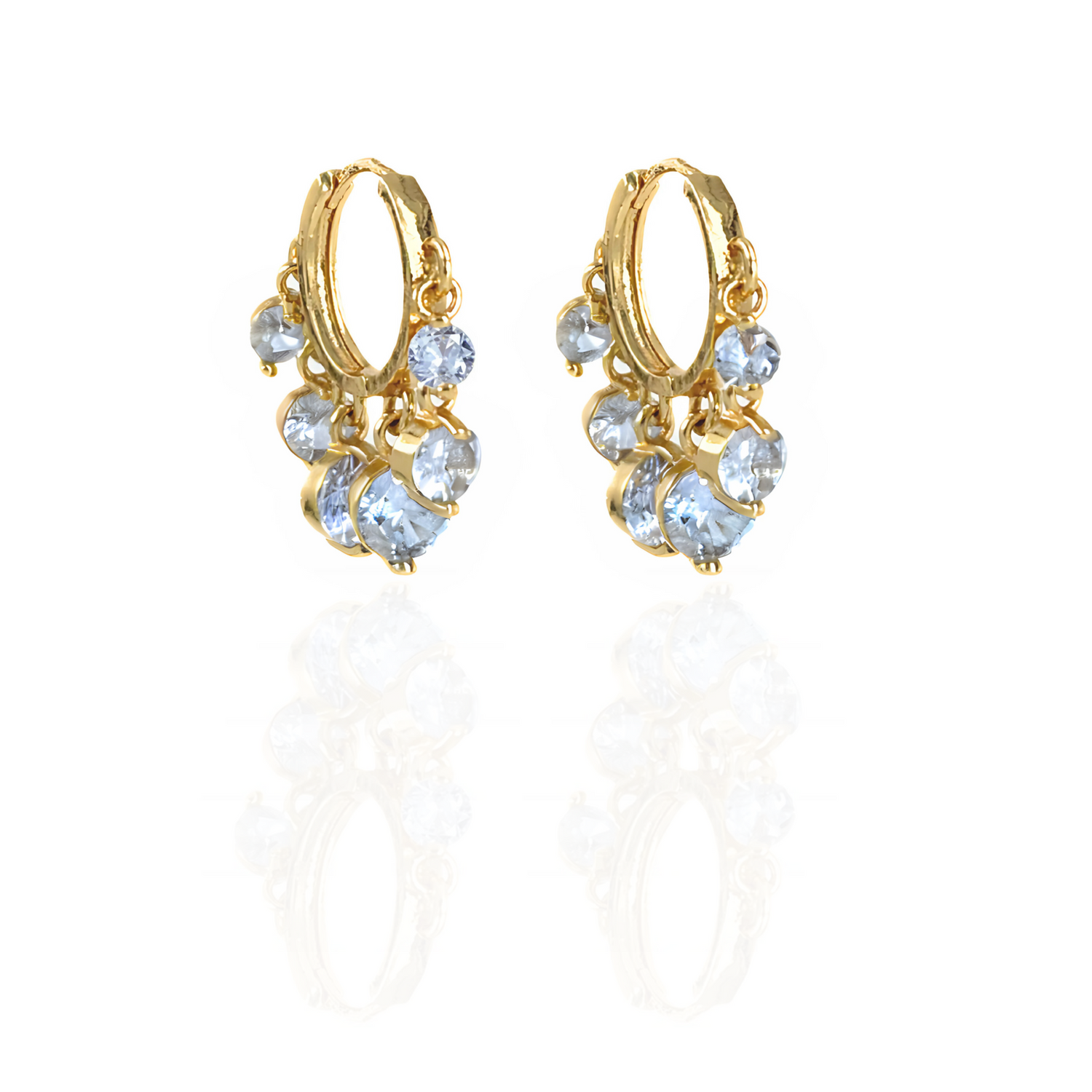
How Artificial Jewellery Took Over the Real Jewellery Market
Elayers By MayaShare
In the ever-evolving world of fashion and accessories, the jewellery industry has witnessed a remarkable transformation. Once dominated by the allure of precious metals and gemstones, the jewellery market has seen a surge in the popularity of artificial jewellery. This shift has not only disrupted the traditional jewellery landscape but has also captivated the hearts and wallets of consumers worldwide.
The Rise of Artificial Jewellery
The jewellery industry has always been a reflection of societal trends and consumer preferences. In recent years, the demand for affordable, versatile, and trendy jewellery has skyrocketed, leading to the meteoric rise of artificial jewellery. These pieces, crafted from materials like stainless steel, 18K gold plating, and anti-tarnish silver, have become the go-to choice for fashion-conscious individuals who seek to express their style without breaking the bank.
A Brief History of Jewellery Market Trends
The jewellery market has long been dominated by the allure of real, precious jewellery. However, the past few decades have witnessed a gradual shift in consumer preferences. As the global economy fluctuated and disposable incomes were impacted, the demand for more affordable, yet stylish, jewellery options grew exponentially. This paved the way for the emergence of artificial jewellery, which offered a compelling alternative to the traditional high-end market.
Factors Contributing to Artificial Jewellery's Popularity
The rise of artificial jewellery can be attributed to several key factors that have resonated with consumers across generations and socioeconomic backgrounds.
Affordability
One of the primary drivers of artificial jewellery's success is its affordability. With the cost of real jewellery often prohibitive for many, artificial pieces have become a more accessible option, allowing individuals to indulge in their love for fashion and self-expression without the hefty price tag.
Variety and Design Options
Artificial jewellery manufacturers have embraced the opportunity to offer a vast array of designs, catering to diverse tastes and preferences. From delicate, minimalist pieces to bold, statement-making jewellery, the options are endless, enabling consumers to curate their personal style with ease.
Changing Consumer Preferences
As the younger generations come of age, their attitudes towards jewellery have evolved. Millennials and Gen Z consumers are increasingly drawn to the versatility, trendiness, and sustainability of artificial jewellery, which aligns with their values and lifestyle preferences.
Sustainability Concerns
The growing awareness of environmental and ethical concerns surrounding the jewellery industry has also contributed to the rise of artificial jewellery. Consumers are now more conscious of the impact of mining and production processes, leading them to seek out alternatives that are perceived as more sustainable and socially responsible.
Comparison: Artificial vs. Real Jewellery
While the allure of real, precious jewellery remains, the advantages of artificial pieces have made them a formidable contender in the market.
Cost Differences
The most significant distinction between artificial and real jewellery is the cost. Artificial pieces are typically much more affordable, making them accessible to a broader range of consumers who may not have the means to invest in high-end, real jewellery.
Durability and Maintenance
Artificial jewellery, with its advanced materials and finishes, often boasts superior durability and lower maintenance requirements compared to real jewellery. Pieces like anti-tarnish silver and 18K gold plating can withstand daily wear and tear, reducing the need for frequent cleaning and repairs.
Aesthetic Appeal
While real jewellery is undoubtedly beautiful, the craftsmanship and attention to detail in artificial pieces have improved significantly. Many consumers now find the aesthetic appeal of artificial jewellery to be on par with, or even surpassing, that of traditional real jewellery.
Versatility in Styling
Artificial jewellery's versatility has become a significant advantage. These pieces can be easily mixed and matched, allowing consumers to create a wide range of looks and experiment with their personal style without the constraints of real jewellery.
The Impact on the Real Jewellery Market
The rise of artificial jewellery has had a profound impact on the traditional real jewellery market, forcing industry players to adapt and evolve.
Shifting Market Shares
As artificial jewellery has gained popularity, it has carved out a significant share of the overall jewellery market, challenging the dominance of real, precious jewellery. This shift has compelled real jewellery brands to reevaluate their strategies and offerings to remain competitive.
Adaptation Strategies of Traditional Jewellers
In response to the artificial jewellery boom, traditional jewellers have had to adapt their business models and product portfolios. Some have embraced the trend by incorporating artificial elements into their collections, while others have doubled down on the exclusivity and craftsmanship of their real jewellery offerings.
Hybrid Offerings: Combining Real and Artificial Elements
The jewellery industry has witnessed the emergence of hybrid offerings that combine real and artificial elements. These products aim to cater to the diverse preferences of consumers, providing a middle ground between the two extremes and offering a unique value proposition.
Consumer Behavior and Perceptions
The rise of artificial jewellery has also influenced consumer behavior and perceptions within the jewellery market.
Changing Attitudes Towards Jewellery
Consumers, particularly younger generations, have embraced a more casual and expressive approach to jewellery. They view it as a means of self-expression and a reflection of their personal style, rather than solely as a symbol of status or wealth.
Influence of Social Media and Fashion Trends
Social media platforms and the ever-evolving fashion landscape have played a significant role in shaping consumer preferences for artificial jewellery. Trends, influencer endorsements, and the desire for Instagram-worthy looks have driven the demand for affordable, on-trend pieces.
Generational Differences in Jewellery Preferences
While older generations may still hold a strong preference for real, precious jewellery, younger consumers have shown a greater openness to artificial options. This generational shift has further fueled the growth of the artificial jewellery market.
The Role of Technology in Artificial Jewellery
Advancements in technology have been a crucial enabler in the rise of artificial jewellery, allowing for innovative manufacturing techniques and improved product quality.
Advanced Manufacturing Techniques
The jewellery industry has embraced the use of advanced manufacturing methods, such as 3D printing and computer-aided design (CAD), to create intricate and customized artificial pieces. These technologies have revolutionized the production process, making it more efficient and cost-effective.
Improved Materials and Finishes
The materials used in artificial jewellery have also undergone significant improvements. Stainless steel, 18K gold plating, and anti-tarnish silver coatings have become increasingly sophisticated, offering enhanced durability, shine, and longevity.
Customization and Personalization Options
The integration of technology has empowered consumers to personalize their artificial jewellery, further fueling the demand for these products. Consumers can now easily customize designs, engrave personal messages, and create one-of-a-kind pieces that cater to their individual preferences.
Ethical and Environmental Considerations
As the jewellery industry evolves, the spotlight has also shifted to the ethical and environmental implications of both real and artificial jewellery.
Sustainable Practices in Artificial Jewellery Production
Artificial jewellery manufacturers have made strides in adopting more sustainable production practices, such as using recycled materials and implementing eco-friendly manufacturing processes. This has helped to address the environmental concerns associated with the jewellery industry.
Ethical Concerns in Real Jewellery Sourcing
The real jewellery industry has faced increased scrutiny regarding the ethical sourcing of precious metals and gemstones. Consumers are now more aware of the potential human rights and environmental issues that can arise from the mining and supply chain of real jewellery.
Consumer Awareness and Responsible Choices
As consumers become more conscious of these ethical and environmental considerations, they are increasingly making informed choices about the jewellery they purchase. This has led to a growing demand for transparency and accountability within the industry, further shaping the landscape of the jewellery market.
The Future of the Jewellery Market
As the jewellery industry continues to evolve, the coexistence of real and artificial jewellery is likely to shape the future of the market.
Predicted Trends and Innovations
Industry experts anticipate that the jewellery market will continue to see a blend of real and artificial offerings, with a focus on sustainability, personalization, and technological advancements. Emerging trends may include the integration of smart features, the use of lab-grown diamonds, and the expansion of customization options.
Potential for Coexistence of Real and Artificial Jewellery
While artificial jewellery has made significant inroads into the market, the allure of real, precious jewellery is unlikely to diminish entirely. The two segments may find a way to coexist, catering to different consumer preferences and price points within the broader jewellery landscape.
Emerging Markets and Opportunities
The growth of artificial jewellery is not limited to established markets; it is also gaining traction in emerging economies, where the demand for affordable, fashionable accessories is on the rise. This presents new opportunities for both traditional and artificial jewellery brands to expand their reach and cater to diverse consumer needs.
Conclusion
The rise of artificial jewellery has undoubtedly transformed the jewellery industry, challenging the long-held dominance of real, precious jewellery. Factors such as affordability, versatility, and sustainability have propelled artificial pieces to the forefront, captivating the hearts and wallets of consumers worldwide.
As the industry continues to evolve, the coexistence of real and artificial jewellery is likely to shape the future of the market. Traditional jewellers must adapt to this changing landscape, while artificial jewellery brands continue to innovate and cater to the diverse preferences of modern consumers.
Ultimately, the jewellery industry's transformation reflects the broader societal shifts in consumer behavior, values, and the ever-changing landscape of fashion and self-expression. The success of artificial jewellery serves as a testament to the power of innovation, accessibility, and the ability to meet the evolving needs of the modern consumer.

